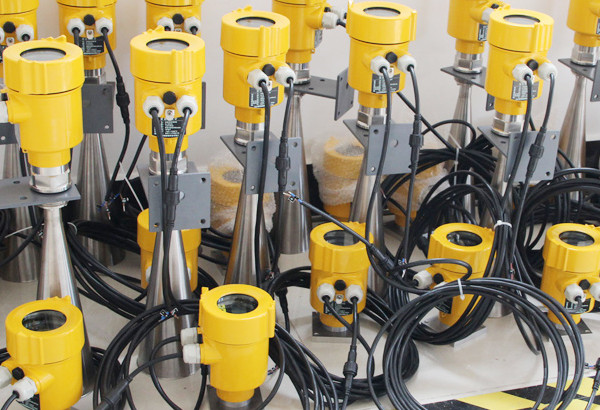Abstract
Precise monitoring of dust hopper levels in electrostatic precipitators (ESPs) plays a critical role in ensuring the stable operation of thermal power plants, preventing equipment failures, and achieving environmental protection goals. This article discusses the working principles, advantages, and practical applications of radar level meters in this context, with a focus on their performance in challenging environments such as high dust concentrations.
1. Introduction
Electrostatic precipitators (ESPs) are indispensable in thermal power plants for removing particulate matter from flue gas. The process involves passing dust-laden gas through a high-voltage electric field, which charges the dust particles. These particles are then collected on electrodes and periodically removed into dust hoppers.
Over time, the accumulation of dust in the hopper can reach critical levels, necessitating timely clearance. Failure to monitor and control these levels accurately may result in overflow, reduced efficiency of the ESP, equipment damage, and regulatory violations due to environmental concerns.
Traditional level measurement instruments often struggle in such environments due to high temperatures, pressures, and dust concentrations. Radar level meters, with their non-contact and high-precision capabilities, present a promising solution.

2. Working Principles of Radar Level Meters
Radar level meters operate based on the principles of electromagnetic wave reflection. The device emits microwave signals via an antenna towards the surface of the material in the hopper. The reflected signals are received, and the time delay between emission and reception is used to calculate the distance to the material surface. This enables precise determination of the material level.
Modern radar level meters, particularly those operating at higher frequencies (e.g., 80 GHz), provide several advantages:
- High resolution and accuracy: They can detect even small level changes, ensuring reliable measurements.
- Resistance to environmental factors: Unlike ultrasonic or contact-based meters, radar devices are unaffected by temperature, pressure, humidity, or dust.
- Wide applicability: Suitable for solid, liquid, and slurry materials, radar level meters are especially effective in high-dust environments such as ESP hoppers.

3. Advantages of Radar Level Meters in ESP Dust Hoppers
3.1 Precision in Challenging Conditions
The high frequency and narrow beam angle of modern radar meters ensure accurate measurements even in hoppers with steep angles or irregular surfaces. Dust particles, which often scatter signals, have minimal impact on performance due to advanced signal processing technologies.
3.2 Durability and Low Maintenance
Non-contact measurement eliminates wear and tear, a common issue with contact-based instruments. Additionally, radar meters are highly resistant to mechanical vibrations and corrosive environments, reducing maintenance costs and downtime.
3.3 Real-Time Monitoring and Integration
Many radar level meters offer digital interfaces for integration with plant control systems. This allows operators to monitor hopper levels in real-time, automate clearing processes, and receive early warnings of potential overflow.

4. Practical Application Case Study
A thermal power plant installed 80 GHz radar level meters on its ESP dust hoppers to address challenges in monitoring hopper levels. The meters were positioned to measure the levels in real-time, ensuring reliable performance despite high dust concentrations and elevated temperatures.
Key outcomes from the deployment include:
- Improved measurement accuracy: Measurements maintained an error margin of less than 5 mm, even in extreme dust conditions.
- Enhanced operational efficiency: Real-time monitoring facilitated timely hopper clearing, reducing overflow incidents by 30%.
- Cost savings: Non-contact operation reduced wear-and-tear-related maintenance costs by 40% over six months.
5. Comparison with Traditional Measurement Methods
| Feature | Radar Level Meters | Ultrasonic Meters | Contact-Based Meters |
|---|---|---|---|
| Accuracy | High | Moderate | Moderate |
| Environmental Resistance | Excellent | Poor (dust affects signals) | Poor (prone to wear) |
| Maintenance | Low | Moderate | High |
| Suitability for Dusty Environments | Excellent | Poor | Moderate |

6. Conclusion and Future Prospects
Radar level meters have demonstrated remarkable advantages in measuring dust hopper levels within electrostatic precipitators, including high precision, reliability, and adaptability to challenging conditions. Their ability to integrate seamlessly with control systems further enhances their value in modern thermal power plants.
Looking ahead, combining radar level meter technology with IoT solutions and predictive maintenance algorithms could enable remote monitoring, further reducing operational costs and enhancing efficiency. Additionally, this technology could be expanded to other industrial applications, such as cement production, mining, and chemical processing.
Radar level meters represent a critical advancement in industrial measurement technology, ensuring not only operational stability but also environmental compliance in critical industries.
